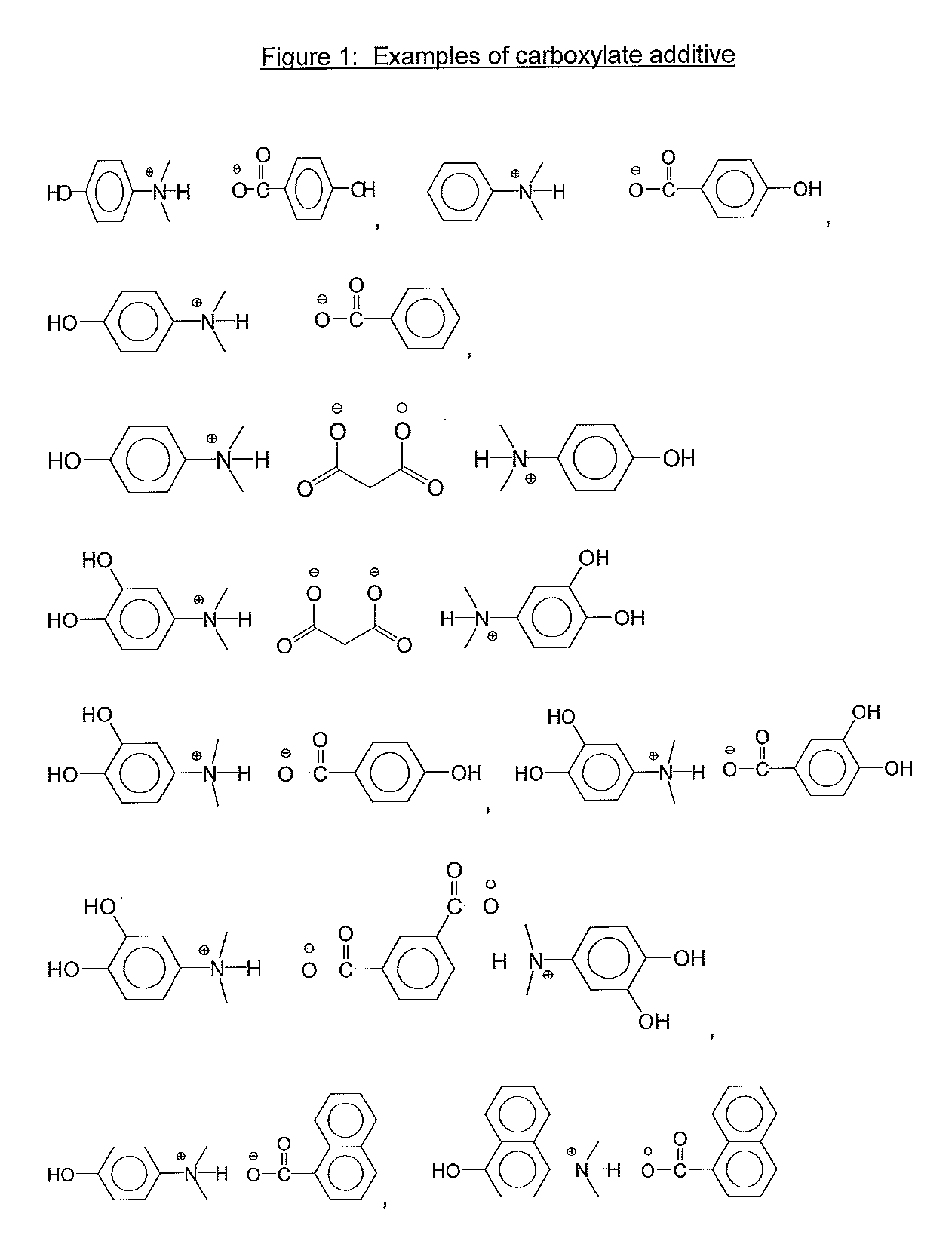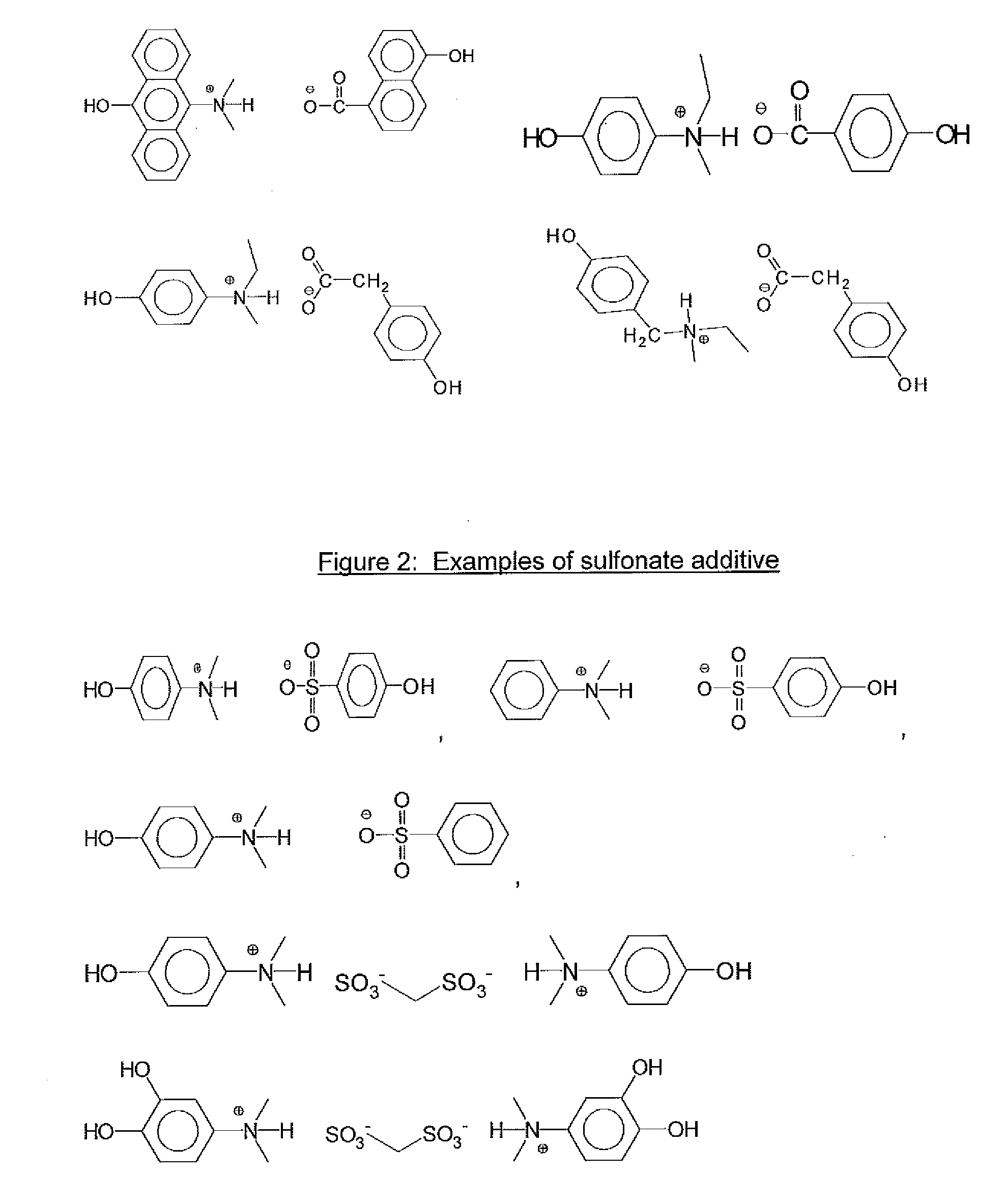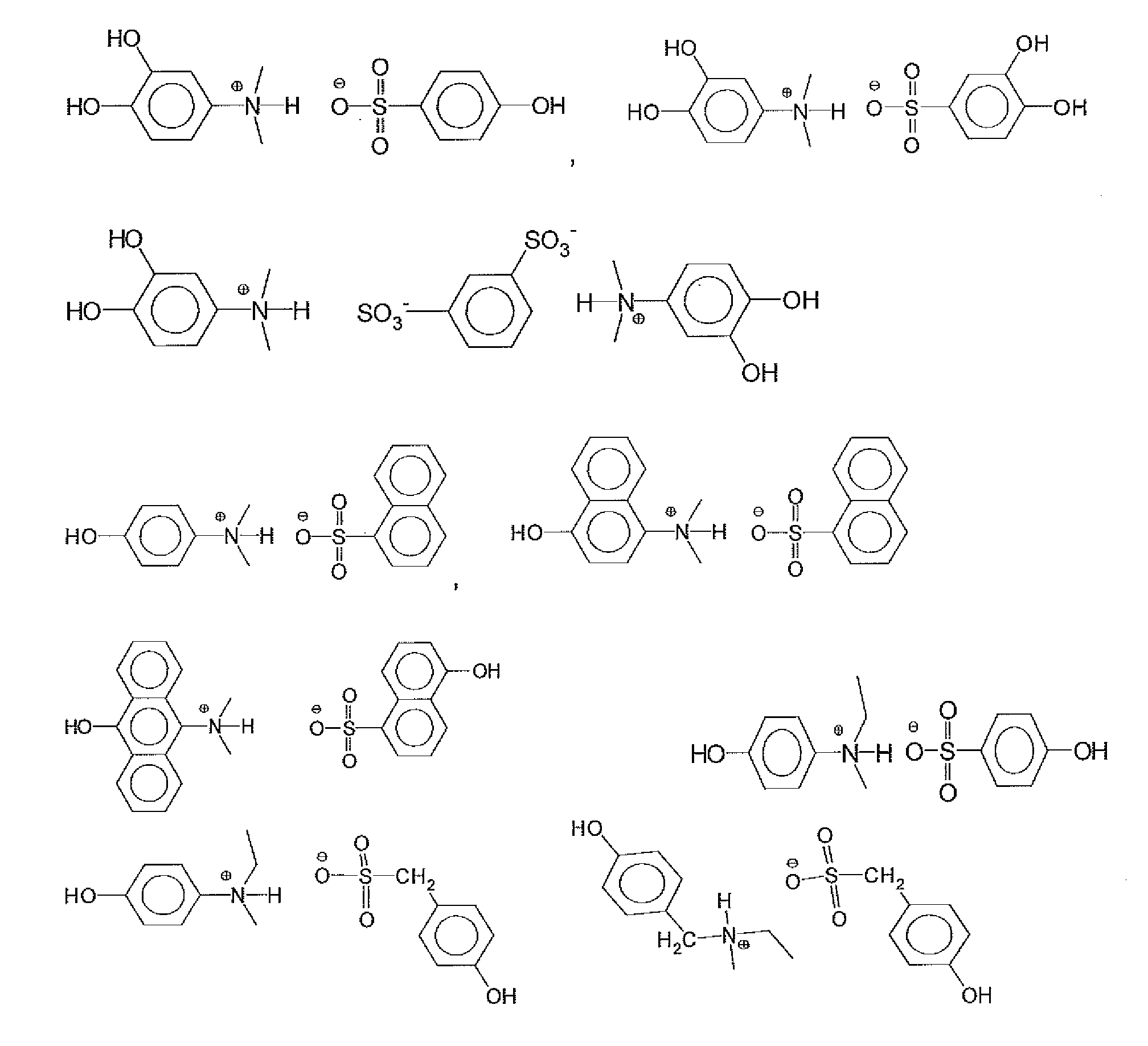Bottom antireflective coating compositions and processes thereof
- Summary
- Abstract
- Description
- Claims
- Application Information
AI Technical Summary
Benefits of technology
Problems solved by technology
Method used
Image
Examples
synthesis example 1
[0066]1.52 g of 4-hydroxyphenylacetic acid was dissolved in 40.37 g of propylene glycol mono methylether (PGME). To the above PGME solution, 2.96 g of trihexylamine was added and mixed.
[0067]The solution was heated at 40° C. under reduced pressure using a rotary evaporator and the product was isolated. H-NMR spectrum showed N+CH2 proton at 3.5 ppm. Proton of free carboxyl group was not observed and formation of carboxylic acid salt was confirmed.
synthesis examples 2-15
[0068]Table 1 lists examples 1-15 which were all the salts which were made as stock solutions in PGME and used in the formulation examples. These were reacted in the same manner as shown above, but leaving the materials in PGME as stock solutions to be used in the above described formulation examples.
TABLE 1Synth.ExCarboxylic acidAmineSolvent14-hydroxyphenyl aceticTrihexylamine (2.96 g)PGME (40.37 g)acid (1.52 g)24-hydroxyphenyl aceticTriethylamine (1.11 g)PGME (23.71 g)acid (1.52 g)34-hydroxyphenyl acetic3-(dimethylamino)phenol (1.51 g)PGME (27.27 g)acid (1.52 g)44-hydroxyphenyl acetic3-(diethylamino)phenol (1.82 g)PGME (30.05 g)acid (1.52 g)5Malonic acid (1.04 g)3-(dimethylamino)phenol (3.01 g)PGME (36.52 g)6Malonic acid (1.04 g)3-(diethylamino)phenol (3.64 g)PGME (42.08 g)74-(4-Trihexylamine (1.48 g)PGME (21.77 g)hydroxyphenyl)benzoicacid (1.07 g)82-(4-Trihexylamine (1.48 g)PGME (20.33 g)hydroxylphenoxy)propionicacid (0.91 g)94-hydroxybenzoic acidTrihexylamine (1.48 g)PGME (18.34...
example 1
Formulation and Exposure Example 1
[0069]PQMA / EAdMA (60 / 40) copolymer (0.2218 g), tris(vinyloxybutyl)cyclohexane 1,2,4-tricarboxylate (0.0665 g), triethylaminium 4-hydroxyphenylacetate (0.0670 g) and bis[tris(4-vinyloxyethoxyphenyl)sulfonium]perfluorobutanedisulfonate (0.0047 g) were dissolved in a mixture of 13.57 g of propyleneglycol monomethylether, 5.81 g of propyleneglycol monomethylether acetate and 0.241 g of γ-valerolactone to form a antireflective composition (B.A.R.C.) solution. The solution was filtered through a 0.2 μm micron filter.
[0070]The B.A.R.C. solution was coated on a silicon wafer and heated on a hotplate at 190° C. for 60 seconds to give a film thickness of 400 Å. The absorption (k) value was 0.38 and the refractive index (n) value was 1.726 at 193 nm. The B.A.R.C. wafer was prewet with a solvent and coated with 193 nm photoresist and heated on a hotplate for 110° C. for 60 seconds to give a film thickness of 140 nm. The coated wafer was exposed using Nikon 306D...
PUM
| Property | Measurement | Unit |
|---|---|---|
| Composition | aaaaa | aaaaa |
| Structure | aaaaa | aaaaa |
| Antireflective | aaaaa | aaaaa |
Abstract
Description
Claims
Application Information
 Login to View More
Login to View More - R&D
- Intellectual Property
- Life Sciences
- Materials
- Tech Scout
- Unparalleled Data Quality
- Higher Quality Content
- 60% Fewer Hallucinations
Browse by: Latest US Patents, China's latest patents, Technical Efficacy Thesaurus, Application Domain, Technology Topic, Popular Technical Reports.
© 2025 PatSnap. All rights reserved.Legal|Privacy policy|Modern Slavery Act Transparency Statement|Sitemap|About US| Contact US: help@patsnap.com



